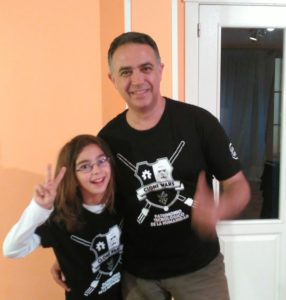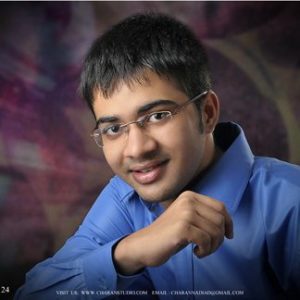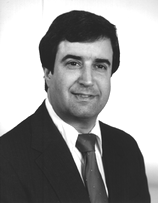In late December 2016, I announced a small gift of 10 Deep Learning books to people interested in or working in AI. This is my way of paying back to the community which has been extremely generous with ideas and code.
I asked people to send me an email letting me know their interest in AI and their contributions to the community. Here is the video of the announcement.
The response was overwhelming. Thank you all!
I received nearly 300 emails from people from around the world — pretty much every continent other than Antarctica! On internet scale that is a small number, but for my tiny blog, it was BIG. I received emails from people from many different walks of life — students, teachers, entrepreneurs, startup and big company folks, high school students and retired professional, beginners and experts.
Many of these people have made contributions to their communities donating time, code and ideas. Therefore, it was extremely difficult to pick just 10 recipients for the gift. While many factors played a role in deciding who received the gift, I want to emphasize that after I narrowed down the list to 20, luck played a significant role. Half of the book recipients were chosen randomly from among 15 extremely eligible people. Some of the people who were not chosen by the random number generator have contributed code to the community, others have contributed significant time teaching kids from underprivileged backgrounds, some are educators and teachers in the community, and some are working on computer vision programs for people with disabilities. So I apologize if you had a strong case, but were not selected.
Without further ado, here is the list of recipients.
1. Jose Luis Villarejo & Arantxa Villarejo
Jose and his 9-year-old daughter Arantxa are interested in educational robotics.
This father and daughter team, from Spain, freely shares their knowledge with the world. Their robots are Printbots; these robots can be built using printed 3D parts. I highly recommend their blog, GitHub repository and YouTube channel where they freely share their knowledge on how to build these robots.
Arantxa is a TEDxYouth (Madrid) speaker and is an inspiration to all girls interested in math, science, robotics and AI.
I was also impressed to see their demo using OpenCV. The robot’s head pose is being controlled by the user’s head pose. Very cool indeed!
2. Yida Wang
Yida, a Master’s students at Beijing University of Posts and Telecommunications, is majoring in machine learning and computer vision.
His contributions to the open source community are numerous. Two of his projects are now part of opencv_contrib modules. He also won the second prize in Microsoft Open Source Challenge 2016 for deep learning project “CNTK on Mac: 2D object Recognition by 3D Models”. Finally, Yida is also a core member of deep learning toolbox: tiny-dnn — tiny-dnn is a C++11 implementation of deep learning. It is suitable for deep learning on limited computational resource, embedded systems and IoT devices.
3. Ravi Soni
Ravi is a graduate student at the University of Oklahoma. He developed a low-cost prosthetic arm for amputees called “Sparsh” — the Hindi word for touch! Sparsh received the Tally Innovation award for this innovative final year project at Indian Institute of Sciences (IISc). He was invited to speak at Electronics Rocks conference where he talked about design and implementation of Sparash.
You can see a list of projects Ravi has worked on here. Project files from Sprash are shared here.
4. Kiet Tuan Nguyen
Kiet is a student from Vietnam. Last year he built a wearable safety device for blind people. The device is worn like a VR headset and it warns against potential hazards ( fire, gas etc. ). It also detects a lot of other objects by using Deepbelief SDK.
Kiet has shared details of his project ( in Vietnamese ) here
5. Joe Minichino
Joe is a senior software developer who has contributed many projects to the open source community. He has also published an OpenCV 3 book and is in the process of developing a Computer Vision and Machine Learning course. His open source in-memory database called LokiJS has about 3k stars on GitHub. It is a big time commitment to publish and maintain popular open source libraries and we all benefit from such efforts.
6. Aditthya Ramakrishnan & the Next Tech Lab
Aditthya is an undergraduate senior at SRM University in India. In the fall of 2015, he won a scholarship to intern at the MIT Media Lab . Inspired by his interactions with scientists like Marvin Minsky and Ed Boyden, he started a student-run lab ( Next Tech Lab ) at his university which now has 70 students doing research projects in the fields of AI/ML (Minsky Lab), AR/VR (Pausch Lab), Computational Biology (Dayhoff Lab) among others. He was also able to convince a few professors and researchers from MIT, U-Pittsburgh and IBM Research to help as advisers in the student-run lab. Aditthya has also given talks at local ACM chapters and PyCons about AI and creating chatbots for slack/messenger. In addition, Aditthya and his teammates won the first prize for building a recommendation engine at India’s largest Hackathon using concepts in deep learning for sentiment analysis.
7. Okba Bekhelifi & the UDev Community
Okba is currently a Ph.D. student working on optimizing brain-computer interfaces for real world applications at the University of Sciences and Technology of Oran, Algeria (USTO-MB). In his first year of the Ph.D. program, he co-founded a scientific club ( UDev Community ) with the goal of teaching students new developing technologies for free. During his 2 years of active membership, Okba held many positions, including one as a teaching manager. He was responsible for organizing a few teaching workshops that lasted for 3 days each. They taught Qt Framework for C++, PHP, HTML5/CSS3, Ruby On Rails, Tuning performance in MATLAB, and an Hour Of Code. In addition, Okba is also contributing to open research projects “AI:ON” initiated by Keras creator François Chollet.
8. Akiva Schiff
Akiva recently finished his bachelor’s degree and has started working in the field of computer vision. He and his collaborators helped develop a national computer science competition in Israel called SkillZ. They created a computer game which is played by means of coding with an API and high schools from around the country competed to code the best player. This experience was their first introduction to the field of AI. They developed algorithms to program the behavior of players and encouraged kids to learn more about these algorithms. Akiva is actively involved in creating advanced (and fun) computer science curricula for kids in high schools.
9. Dr. Fred Weinhaus
Dr. Fred Weinhaus has a Ph.D. in physics. He has worked in and actively contributed to image processing for 38 years. He has used Imagemagick since 2007 and has shared over 300 shell scripts to create new applications that are free for non-commercial use. He also volunteers on the ImageMagick Discourse server to answer questions about Imagemagick and digital image processing.
10. Dr. Walter Delashmit
Dr. Delashmit has worked for many years in the defense industry working on NASA Programs, advanced torpedo systems, correlation systems for cruise missiles guidance and smart missiles using 1D, 2D and 3D signatures. He has a significant number of publications in the open literature while working in an industry that does not actively encourage publications because of security concerns. Dr. Delashmit has also taught students at several universities.
Dr. Delashmit received a copy of the Presidential Medal of Freedom from NASA for his work on Apollo 13, the Lockheed Martin Missiles and Fire Control Presidents Performance Award for his work on implementing Improved Software Processes, and recognition of a Significant Technical Achievement in Research (STAR) from the Strategic Defense Initiative (SDI program).
11. Trey Shaffer
Trey is a 17-year-old high school student from Texas. For the past five years, much of his time, heart, and energy have been directed towards computers and mathematics. Every Tuesday after school, he gives lectures on computer science and technology, and he has wholeheartedly dedicated himself to growing these fields in his local area. Some pictures from one of the outreach events he had done with his school’s robotics team.
Recently, Trey found Dr. Andrew Ng’s course on Machine Learning that sparked a passion for machine learning. He wishes to take up machine learning in college and contribute to the field.












